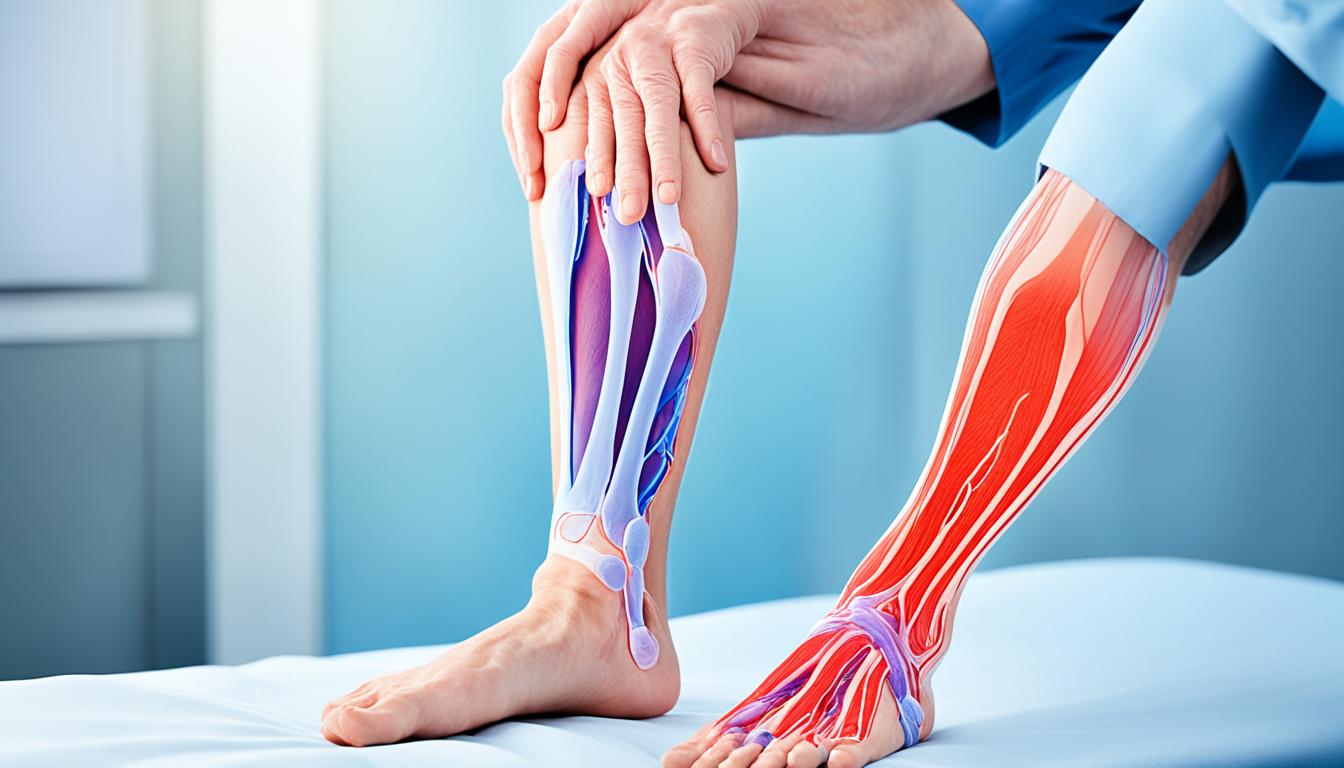Buerger disease, also known as thromboangiitis obliterans, mainly affects certain arteries, veins, and nerves. It’s mostly seen in the arms and legs. This disease causes serious issues like limb ischemia and artery blockages.
The exact cause of Buerger disease is a bit of a mystery. However, we know it links to genes, smoking, and the body’s immune reactions. Quitting smoking is key to managing the disease and stopping it from getting worse.
Common signs of Buerger disease include leg pain when walking, sores that won’t heal, and pain in the limbs even without activity. These symptoms can harm a person’s daily life. If not treated, it may lead to amputations.
Key Takeaways:
- Buerger disease is a non-atherosclerotic vascular disease that primarily affects the small- and medium-sized arteries, veins, and nerves in the extremities.
- The exact cause of Buerger disease is unknown, but it is associated with hereditary susceptibility, tobacco exposure, and immune and coagulation responses.
- Smoking cessation is crucial for managing Buerger disease and preventing further complications.
- Buerger disease presents with symptoms such as claudication, ischemic ulcers, and rest pain.
- Stem cell therapy shows potential in improving ulcer healing and pain-free walking distance in Buerger disease patients.
Diagnosis and Management of Buerger Disease
Finding out if someone has Buerger disease is tricky. It needs a full check of their health history and current problem signs. Doctors search for things like a history of smoking, symptoms showing up under age 50, blocked arteries in the lower leg, issues in the arms or with vein problems, and the fact that other heart disease risks are not there. Only smoking has to be a risk factor.
Doctors might use special pictures of your blood vessels to help spot Buerger disease. This shows any blockages in the arteries of your arms or legs, which points to this condition. It’s key in telling Buerger disease apart from other blood vessel problems.
After a diagnosis, treating Buerger disease involves a few different steps. Medicines are important for helping with the pain and to stop the disease from getting worse. Drugs like blood thinners, medicines that open up blood vessels, and those that lower how much your body is fighting itself are common. Painkillers are also used to make things more bearable.
Surgeries have limited use in Buerger disease because it affects many blood vessels. Yet, some special treatments that don’t need surgery, known as endovascular treatments, can sometimes help. They slow down how quickly the disease moves and make you feel better.
Quitting smoking is crucial for managing Buerger disease and avoiding the need for amputations. Doctors push hard for patients to stop smoking and offer strong support to help them quit. It’s a big part of treating this disease well.
Detailed Diagnosis and Management Table
| Diagnostic Criteria | Management Approach |
|---|---|
|
|
Stem Cell Therapy for Buerger Disease: Current Evidence and Future Directions
Stem cell therapy could be a new way to treat Buerger disease, giving patients hope. In one study, patients showed smaller ulcers and could walk further without pain after getting stem cell implants from bone marrow. This is good news, suggesting that stem cell therapy might improve the lives of those with Buerger disease.
Other methods, such as adding the VEGF gene and giving a type of therapy through the veins (iloprost), also look promising. They help ease symptoms and may stop Buerger disease from getting worse. These new ways of treatment could lead to big changes in how we fight this disease.
However, we still need more research on using stem cells for Buerger disease. Scientists are working to figure out if stem cell therapy is safe and keeps working over time. Also, not smoking is very important in treating Buerger disease and stopping it from causing more harm. Mixing smoking with the right medicines can help ease pain and manage the illness well.

